Best Management Practices

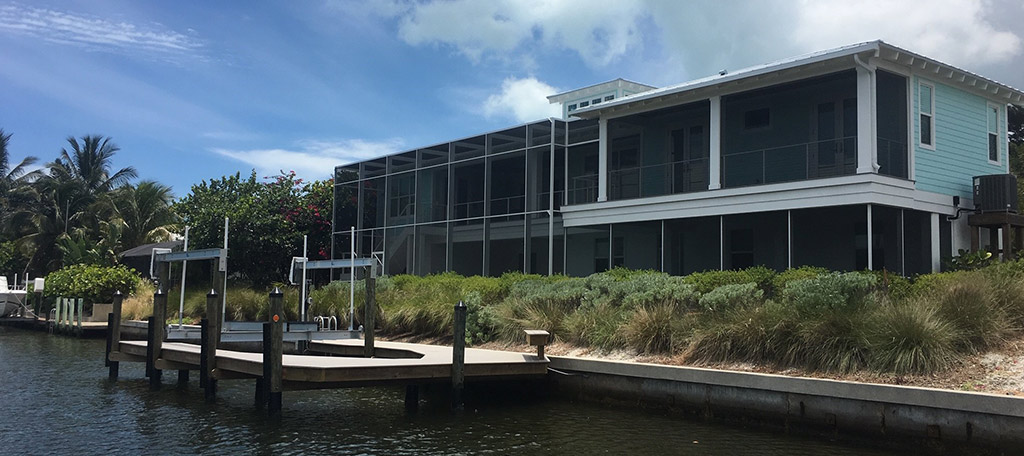
Plant or Maintain Shoreline Buffers
Planting along the shoreline of your canal provides natural nutrient removal from stormwater runoff. The plants will slow down stormwater runoff, and uptake a portion of the nutrients before they enter the canal. These plants will also help stabilize the shoreline to prevent potential erosion and provide habitat for wildlife. Be sure to select plants appropriate for your shoreline environment. Preferably, selected plants should not have high fertilizer needs since Sanibel’s fertilizer ordinance prohibits the application of fertilizers within 25ft of any waterbody including canals. For this reason, native plants are an excellent choice!
There is a chance that you may already have vegetation along your shoreline. In this case, more is better! There is always opportunity to increase the density of your shoreline plantings, which will undoubtedly increase the water quality benefits your buffer provides.
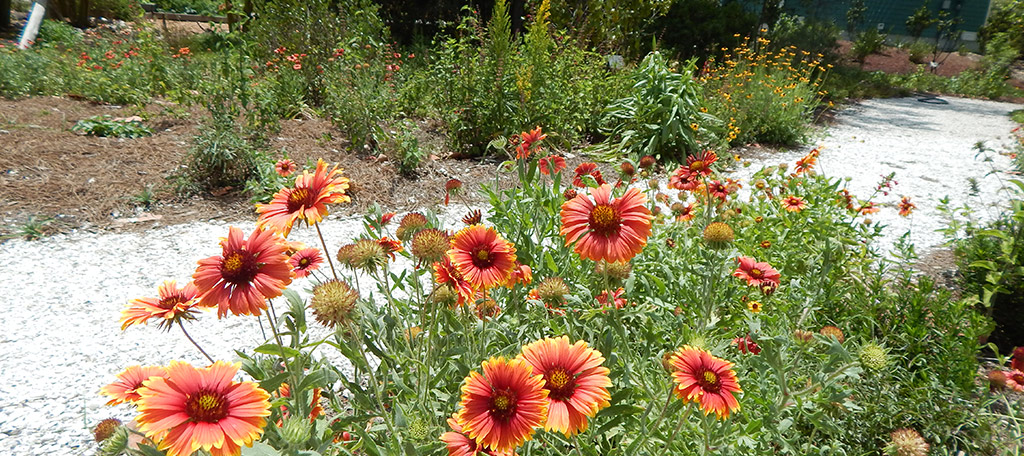
Choose Canal-Friendly Landscaping
Properly planned landscapes can greatly reduce impacts to water quality. Before installing new landscaping, performing an overall site evaluation may be beneficial. The evaluation should take into account: sun vs. shaded areas, salt spray, soil types, soil pH, water drainage, slopes, and soil compaction.
The design of the landscape should include features that reduce runoff and minimize the amount of fertilizer or pesticide application. Grouping plants together according to irrigation needs is essential to the minimization of excess runoff as well as plant survival. Low impact designs are ideal; one that preserves native vegetation. Homeowners should choose plants that are low maintenance, disease resistance and/or Florida friendly. Native plants are highly recommended as they require little to no fertilizer or irrigation and provide excellent habitat for wildlife such as birds and butterflies. Choosing to plant native also helps to preserve the sanctuary character of our beautiful island.
Adhere to the Fertilizer Ordinance
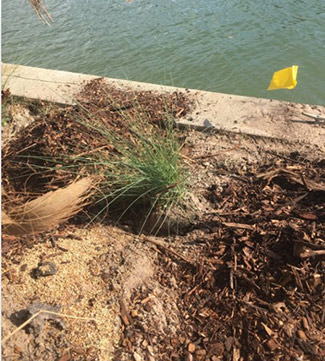
One of the simplest ways to protect water quality in your canal is to follow Sanibel’s fertilizer ordinance (Ord. No. 07-003). The fertilizer ordinance limits the amount of fertilizer applied to the landscape as well as where fertilizer can be applied. By doing so, this limits nutrient runoff or the likelihood of fertilizers ending up in waterbodies and providing fuel for algal growth.
For canal-front property owners, likely the most important thing to know the City’s fertilizer ordinance is that applications of fertilizers containing nitrogen and phosphorus are prohibited within 25ft of any waterbody including canals. Therefore, any turf grass or vegetation within 25ft of a canal cannot be fertilized. There are some native groundcovers, sunshine mimosa, bacopa, and matchweed, that make excellent turf substitutes and can be maintained (mowed) just like you would with turf grass. We would encourage you to plant canal-friendly vegetation within the 25ft no fertilizer buffer as opposed to turf grass.
The City’s fertilizer ordinance also requires nitrogen content to be 20% or less with at least 50% or more in a slow release form. Phosphorus content can only be 2% or less. The ordinance allows up to 6 applications per year, but a single application rate cannot exceed 1lb of nitrogen per 1,000sqft and only 4lbs of nitrogen per 1,000sqft can be applied on an annual basis. Applications of nitrogen and phosphorus are prohibited during the rainy season, July 1-September 30.
An even more effective way of protecting water quality is choosing to go fertilizer free!
Manage your Stormwater
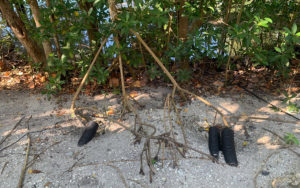
Improving stormwater management is essential for water quality protection and enhancement. Proper management and runoff control allows stormwater to percolate into the ground and enter the canal naturally while also providing an opportunity for treatment. Homeowners should implement features that have the ability to deflect or slow roof and pavement runoff. Downspouts should be positioned in such a way as to aim roof runoff at porous surface i.e. low-lying shell or gravel pit or a vegetative buffer. Stormwater should NEVER be directly discharged into a canal!
Homeowners should avoid the use of concrete or asphalt because it seals the land and does not allow for infiltration of water. Instead, homeowners should install modular pavers, wood decking, stone, gravel, shell or mulch to allow for water percolation.
Dispose of Yard Waste Properly
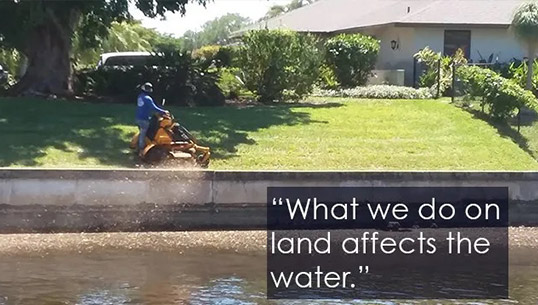
When maintaining the vegetation in your yard, it is critical that you properly dispose of yard waste. Vegetative trimmings, leaves, and grass clippings should be placed in an appropriate container and/or bundled, and stored in an upland location prior to being set out for disposal. Yard waste should NEVER be placed or blown into canals! It is harmful to water quality and a violation of City codes (Section 30-39: Unlawful dumping into water storage areas). When yard waste gets into the canal, it is left to decompose in the water. Yard waste contains nutrients, more specifically nitrogen and phosphorus, and as the yard waste decomposes, nutrients are released into the water providing food for algal growth.
Please understand, vegetation growing along the canal will drop vegetative debris into the water, but this is a NATURAL process that provides necessary detrital matter for the lower levels of the food chain. Disposing of yard waste in a water is UNNATURAL and adds to nutrient loads that are in excess of what the canal can naturally assimilate or process. Waterbodies do need some nutrients to aid necessary ecological functions, but adding unnatural nutrient inputs on top of natural nutrient inputs tends to cause water quality problems.
Yard waste, such as grass clippings, contain nutrients and can be an excellent fertilizer substitute if left to decompose. Yard waste can also be composted to be used as mulch or to enhance soils in landscaped beds. However, when utilizing yard waste you should avoid applying them to areas, such as stormwater systems, where they may be easily carried into the canal.
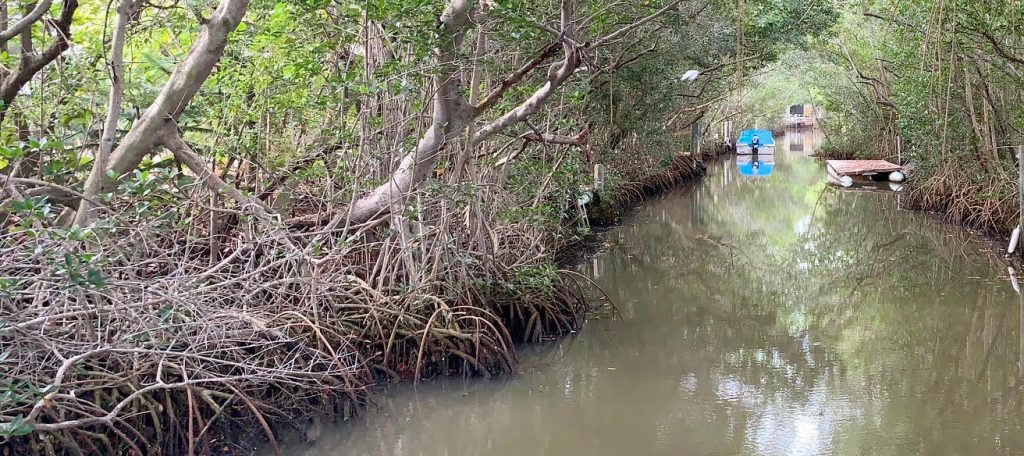
Protect and Preserve Mangroves
Mangroves provide a significant number of ecological services, some of which help to protect and improve water quality. Their complex root systems help to slow down stormwater runoff as it enters canals. The roots also help to trap sediments, and therefore improving water clarity, which is essential for the health of submerged vegetation like seagrasses. The mangroves are able to absorb nutrients present in the water and stormwater runoff, making some nitrogen and phosphorus unavailable for consumption by algae.
Mangroves are a highly valuable resource to our sanctuary island, and as such, it is important that we protect and preserve them. In fact, Sanibel has a local Mangrove Trimming and Preservation ordinance (Sec 38-31 – 38-72), and the City has been delegated the authority to regulate mangrove trimming on Sanibel. Trimming mangroves requires an annual permit, which helps to ensure mangroves are protected on Sanibel through proper trimming practices. If you have questions regarding mangroves or mangroves trimming, you can contact the Natural Resources Department at (239) 472-3700.
Practice Proper Irrigation
Dispose of Pet Waste
Residents of Sanibel should not only pick up after their pets when on walks, but they should also do so in their own yard. Decaying pet waste that enters a water body will release nutrients that promote symptoms of eutrophication (the process by which waterbodies increase in nutrient concentration to the point of being highly excessive) such as algae blooms. The decaying pet waste, which is being metabolized by bacteria, will consume oxygen in the water body increasing the likelihood of a fish kill. Always make sure to clean up after your pet to reduce the chance of compounding water quality issues.
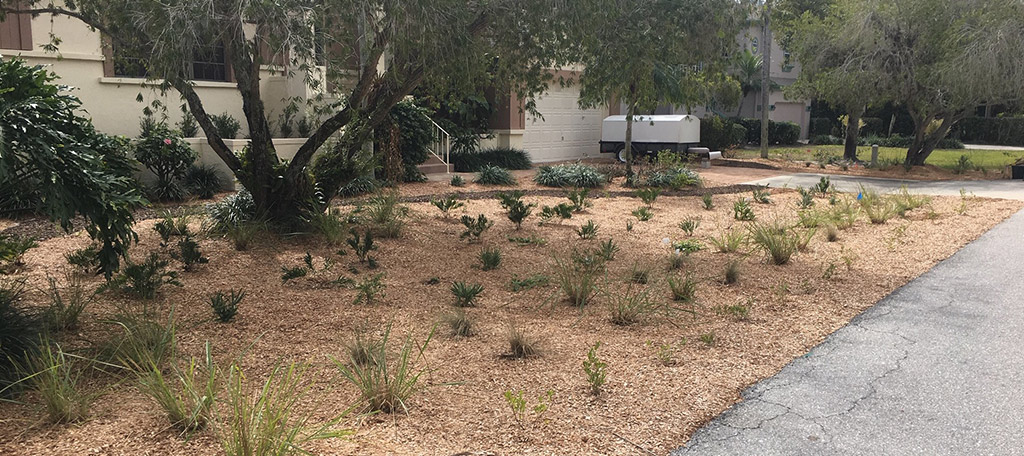
Eliminate or Minimize Turf Grass
The City of Sanibel encourages property owners to consider replacing turf grass with native groundcovers. Planted and mulched areas require significantly less water than turf grass. Native groundcovers require less fertilizer, and can be easily fertilized with natural materials like compost. Removing turf grass will not only reduce nutrient runoff, but it can save you money for the costs associated with fertilization and irrigation.
If you do choose to install turf grass, understanding the type of turf grass on your property can greatly reduce impacts to water quality. When selecting turf grass, homeowners should take into account such things as salt, drought and shade tolerance of each species. Choosing the improper (an unsuitable) species of turf grass for the property can result in the need for excess fertilizer and irrigation to revive ill-adapted species.
Practice Proper Mowing Techniques
Mowing turf grass at the correct height increases turf density and root health while also increasing weed suppression. When grass is mulched, rather than collected in a bag, the clippings contain nutrients (i.e. nitrogen, phosphorus, and potassium) that act as a fertilizer. It is important to remember to keep these clippings away from stormwater systems or canals because as previously mentioned, they do contain nutrients that can impair water quality.
Grass that is mowed too short will result in a reduction of root depth making it harder for the turf to access water in the soil. Moreover, short turf blades and roots have less carbohydrate storage, which makes it harder to recover from environmental stresses to the lawn. Mowing high results in deeper roots, which encourages the development of drought tolerant turf thus reducing irrigation needs. Contrary to popular belief, watering turf infrequently can be beneficial to a lawn. This practice will also train turf roots to grow deeper, and allow the lawn to better withstand drought. Always make sure the mower blade is sharp.
Turf cut by a dull blade will require more irrigation. Mowing height for shaded turf should be raised by 30%. Turf growing in the shade has less access to light. Therefore, it needs more surface area to perform photosynthesis or else it will start to thin. These practices will ultimately reduce the amount of fertilizer and irrigation needed to maintain a healthy lawn while also minimizing impacts to water quality.
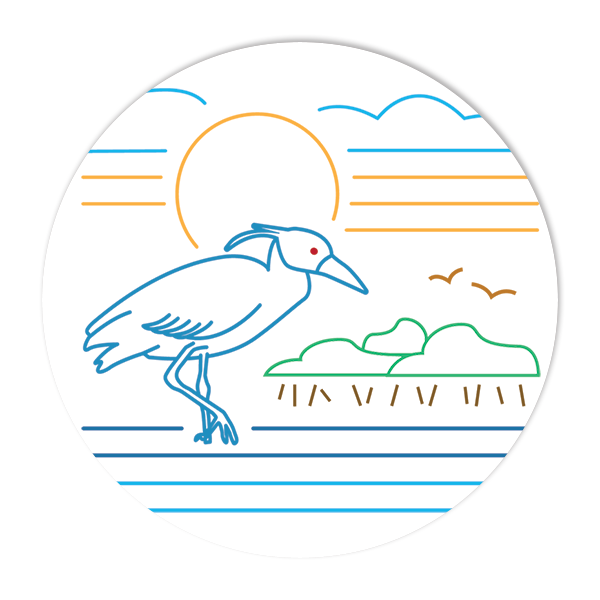
Read about the purpose of this Sanibel Clean Canals website, and the importance of protecting our sanctuary island.
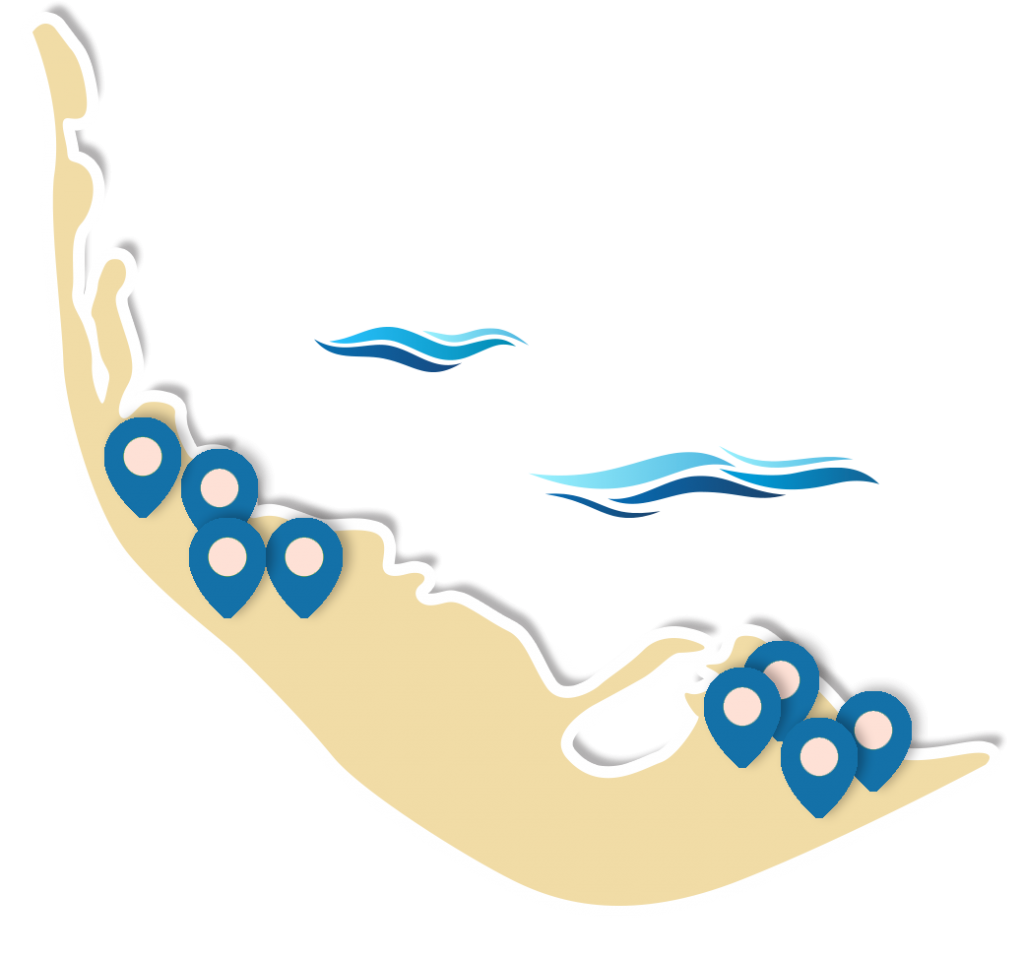
See results of our recent sampling throughout the island, including inorganic nitrogen, orthophosphate, chlorophyll and more.
